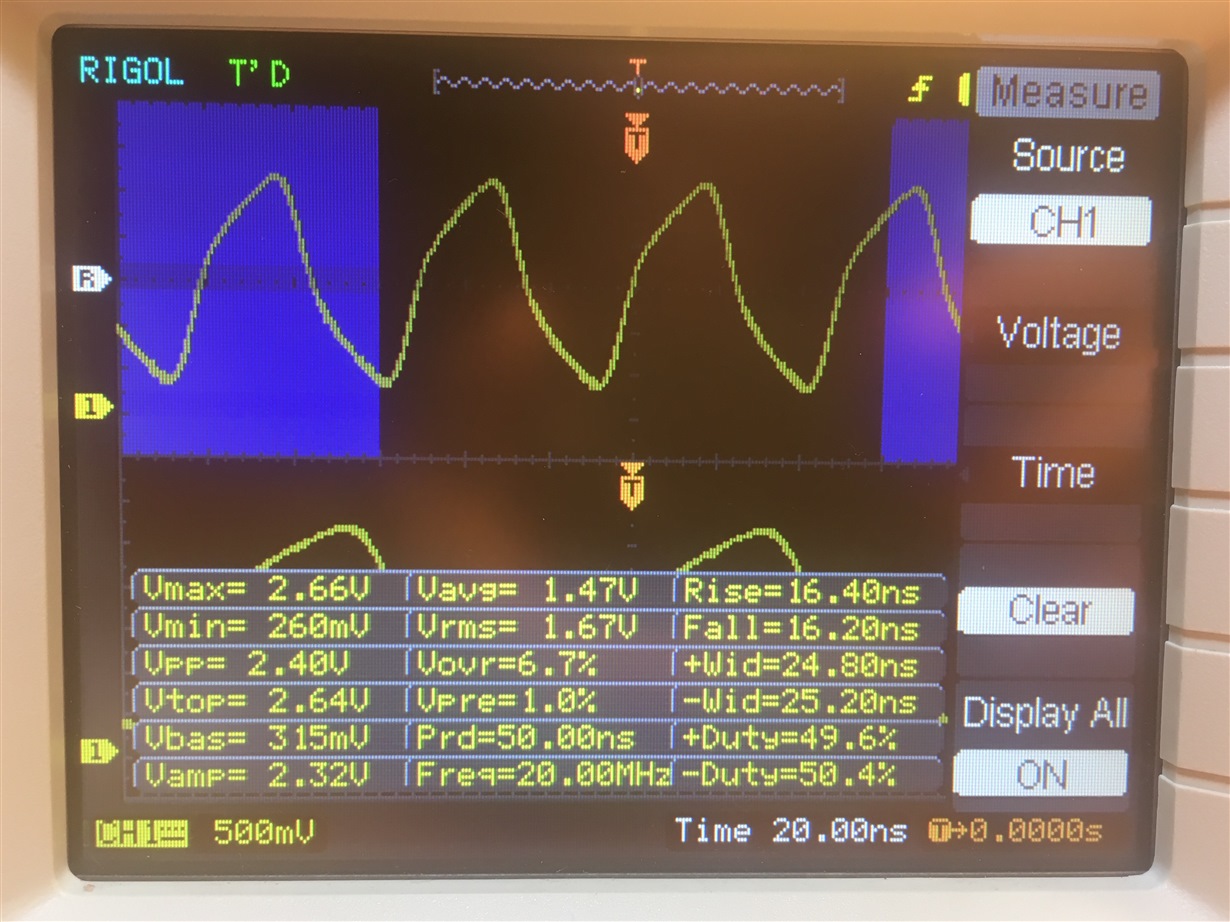Hi,
I'm using a dual 16 bit binary counter SN74LV8154-EP. I need to enable the 32 bit counter feature, and I'm having problems with that. And I'm also having weird outputs. I would really appreciate some help!
Please see an image of the circuit attached.
VCC for the counter is 3.04V. Input oscillations are between 0.4V and 2.4V (20MHz oscillator). First I took Yn readings from counter A, and it works correctly except for the fact that output voltages are wrong. I'm supposed to be getting 0.48V for LOW and 2.48V for HIGH according to the data sheet, but I'm getting ~0V to ~1.8V. Why? That's my first question.
And I'm taking very strange Yn readings from counter B. 20MHz between -0.18V and 0.18V. The data sheet specifically states that "A 32 bit counter can be realized by connecting CLKA and CLKB together and by connecting RCOA to CLKBEN." I did that. Byte selection inputs are all correct too. It's not always LOW – I'm using a 20MHz counter, I'm supposed to observe oscillations. But for some reason it doesn't work. What am I doing wrong? And how do I solve it?
Thank you very much in advance!
-
Ask a related question
What is a related question?A related question is a question created from another question. When the related question is created, it will be automatically linked to the original question.



